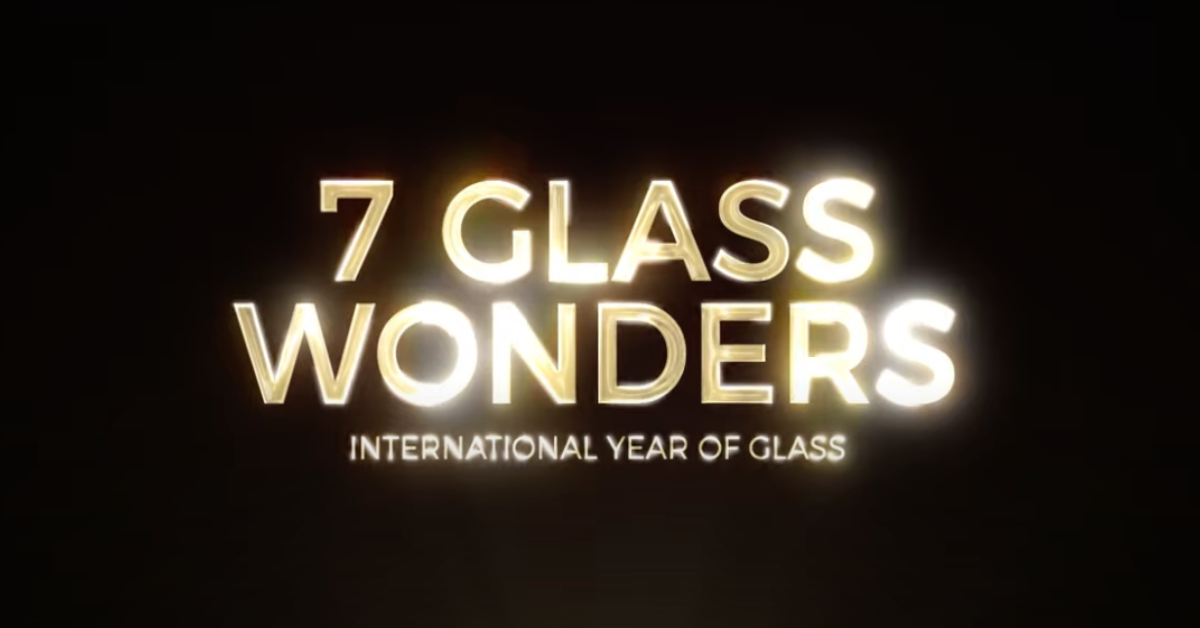THEInternational Year of Glass led us through an in-depth investigation of the world of glass. Numerous countries and sectors were involved in a 365-day hymn aimed at celebrating the potential of an ancient material, yet so ready to respond to the multiple and complex needs of the future.
This reflection has stimulated the compilation of the list of 7 glass wonders of the world (7 Glass Wonders).
The announcement, launched by the organizing committee of the International Year of Glass, set out to classify seven objects, buildings and places in which glass is the absolute protagonist and author of the charm and fortune of the selected reality.
The proposals for the 7 glass wonders, evaluated on the basis of originality, innovative character, historical, cultural and economic importance, were examined by an exceptional jury, made up of glass professionals from different sectors, such as art, architecture, science and industry.
The results of the selection were announced on December 9, 2022, on the occasion of the closing ceremony ofInternational Year of Glass in Tokyo. Among the more than 50 nominations, the following 7 glass wonders stood out:
- the glass treasure of Tutankhamun's tomb. Discovered in 1922, more than 3.300 years after the pharaoh's death, the tomb concealed a series of glass artifacts, still almost intact, used as inlays for jewels, weapons, chariots and even for the headrest and the throne of the regent. But the real highlight of Tutankhamun's outfit is the funeral mask of the ancient pharaoh, whose blue stripes were made from glass strips more than 50 cm long, testifying to the excellent technological level already achieved in this first phase of the history of this material.
- Cup of Lycurgus. The glass diatreta cup, dating back to the XNUMXth century, represents one of the greatest masterpieces of craftsmanship from the Roman era. Being made in dichroic glass, the Cup of Lycurgus shows a different color depending on the light exposure: red when lit from behind and green when lit from the front. Its originality is also revealed in the decorative cage, which does not have an abstract geometric pattern, but one composition with figures, portraying the mythological clash between Lycurgus, the Thracian king, and Ambrosia, follower of the god Dionysus.
- Sainte-Chapelle. It is one of the most significant monuments of Gothic architecture, commissioned by Louis IX as a chapel of the royal palace to house the Crown of Thorns, a fragment of the True Cross and numerous relics of the Passion. The construction, begun in 1241, uses light as an architectural element and features 15 stained glass windows and polychrome, probably inspired by the moralized Bible of Toledo.
- Ware Collection of Blaschka Glass Models of Plants. Leopold and Rudolf Blaschka, glass craftsmen from Dresden, created for Harvard University, between 1886 and 1936, a collection known as “Glass Flowers”, made up of 4300 glass models representing 780 species of plants and their components. The attention to detail, added to a superfine craftsmanship, takes the form of an astonishing union between art and science, which made the two glass masters famous.
- Corning Museum of Glass from New York. Founded in 1951, it houses today the largest glass collection in the world, with over 50.000 objects testifying to the 3.500-year history of this material. The Museum, flanked by the related Library, is enriched every year with new materials and is the reference point for exhibitions and research aimed at celebrating the excellence of glass in every area.
- Optical fibers. The material made up of glassy filaments, capable of conducting light inside them, is today one of the most incredible technological discoveries we have. The optical fiber makes up the global network that allows us to use the Internet, transmitting data quickly, and, in addition to the crucial sector of telecommunications, finds important applications in the fields of lighting, medical diagnostics and surgery.
- Hubble Space Telescope. In over 30 years of activity, Hubble has favored the extraordinary observation of stars, galaxies and other astronomical bodies, thanks to the ability to work in the visible, infrared and ultraviolet ranges. Two glass mirrors give Hubble his optical abilities. A glass primary mirror 2,4 m in diameter and weighing about 800 kg reflects its light onto the 0,3 m secondary mirror. Also thanks to glass, therefore, Hubble has revealed crystalline visions of our universe, inspiring us and changing our understanding of the cosmos.
The 7 wonders of glass represent a very punctual cross-section of the potential offered by this material, capable of continuing to drive innovation and define beauty in many fields.
Sources: objetosconvidrio.com, cgs.org.uk, vidrioperfil.es
Cover image from: 7 Glass Wonders (IYOG) – https://www.youtube.com/watch?v=g9BL7vUjUfU – ICV disclosure



